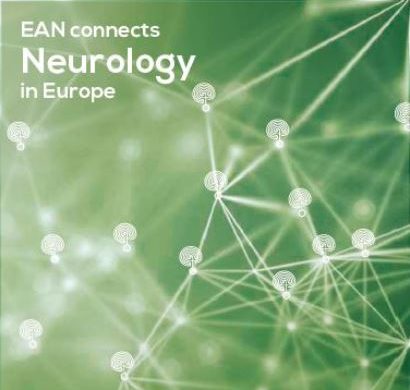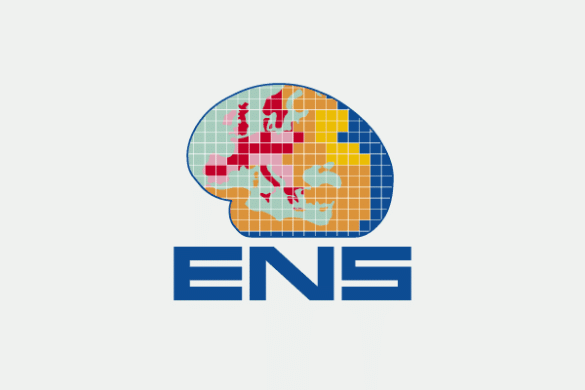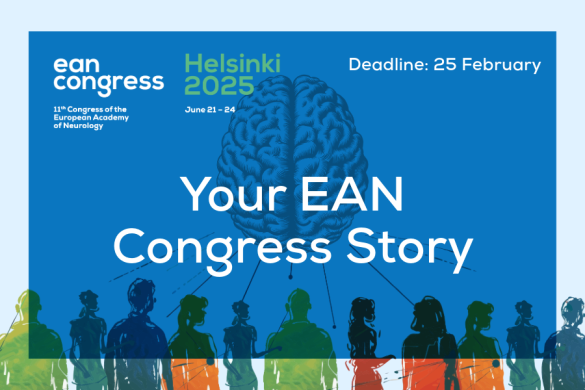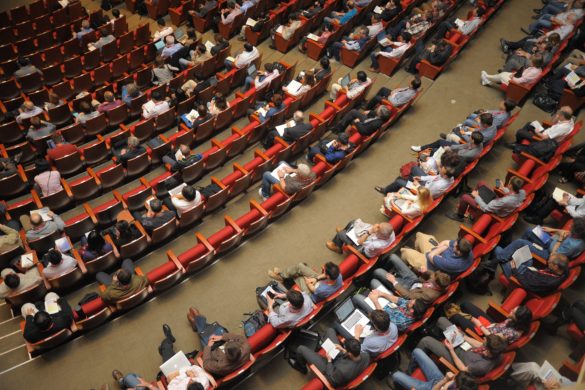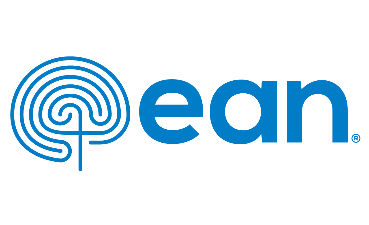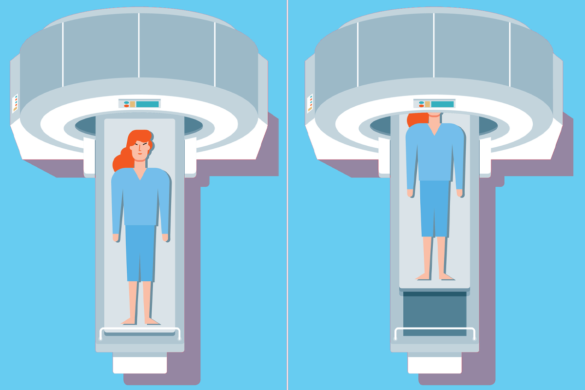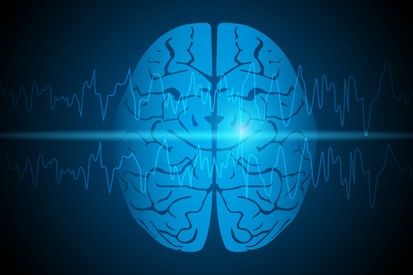Report from Dr. Naida Nasrullayeva from Azerbaijan visiting the Department of Neurology at the University Hospital Copenhagen, Denmark under the supervision of Doctor Michael Oettinger.
First of all, I would like to thank EFNS (EAN) for the opportunity to visit the Rigshospitalet with an educational purpose. The reason is because I wanted to benefit from the experience, to learn, improve and develop new sets of skills.
Copenhagen is one of the most beautiful cities I have ever been. I was very impressed with its unusual architecture, amazing castle, lots of cyclists in the street and beautiful parks. In my opinion the city is too expensive, in particular transport and products. I am very happy that in my life there was this an unrivaled experience, which I will share with my colleagues.
When I arrived at the Rigshospitalet Klaus Hansen showed me the department and in the morning meeting he introduced me to the other neurologists. During the morning seminars they discussed the patients and tried to speak English and it was good for me to understand the conversation.
During my visit, I had opportunity to see neuromuscular diseases, cerebrovascular disease, memory disorders, epilepsy as well as acute and intensive care neurology. I also got acquainted with the peculiarities of the approach to the examination of patients,where I saw some different methods and diagnostic tools.
I was very interested in the clinic for multiple sclerosis and the Danish Multiple Sclerosis Research Center (DMSC) is composed of the MS clinic and the MS research unit, which impressed me with the results of the diagnosis and treatment of various types of the disease, using the latest drugs like Tysabri, Gileniya, Aubagio. Patients are also offered symptomatic therapy for spasticity, bladder and bowel disturbances, pain, fatigue and cognitive symptoms.
I had extremely interesting experience in the department of injury, where patients with headaches of unknown etiology were seen.
In the department of neuromuscular diseases, I saw patients with neuropathy (diabetic and alcoholic etiology), Guillain-Barré Syndrome, various forms of radiculopathy, and myasthenia. Treatments included physical rehabilitation and multiple pharmacological interventions. While being in Denmark, I also visited the Headache Center, where Messoud Ashina and Aydin Gozalov have been working (they are from Azerbaijan, too). On my first day at the Headache center I was surprised that it was a small house with garden. I would like to express gratitude to Dr. Mesoud Ashina and Dr. Aydin Gozalov for the opportunity to participate and observe their work and saw such rare cases like SUNKT. I also saw examination of patients with migraine, Horton’s headache, medicine-provoked headache, idiopathic intracranial hypertension. The Centre has extensive research activity and they are studying the changes that take place during a headache attack.
I was integrated very friendly from the entire team of Rigshospitalet, but I would especially like to mention Ioninis Tsiropoulous, Steen Hasslbatch, Peter Roos, Peter Arlien-Soborg, Brigit Bundesen, Inglelise Christiansen, Jorgen Nielsen and Hanne Maria.
With warm regards, Naida Nasrullayeva
***************************************************
Report from Dr. Anahit Sahakyan from Armenia visiting the Multiple Sclerosis Centre at the Fondazione S. Lucia in Rome, Italy under the supervision of Doctor Maria Grazia Grasso.
From 1st of June to 13th of July I have seen more than 100 patients. Among the diseases were multiple sclerosis, Parkinson’s disease, ischaemic and hemorrhagic strokes. My work in the hospital usually started at 8:30am. In the multiple sclerosis Center I was able participating in observing different clinical presentations of the disease, discussing them and also comparing patients’ MRI changes over time. This internship was a very important and productive experience for me for several reasons. First of all this internship gave me an opportunity to see many patients. The next benefit for me was the fact that I was seeing patients with differently specialised doctors and I had a chance to observe different views and approaches with the patients concerning the diagnosis, treatment or other issues and discuss different aspects of such issues. It was also very interesting to observe the doctors working in a team to solve diverse and complicated problems. It was challenging to see the scientific work that was carried out in the center and application of evidence based medicine in the routine practice, which unfortunately is not a usual practice in Armenia. Another useful accomplishment for me was, that in this highly specialised clinic I realized that several useful matters which are not currently used can be performed and successfully implemented in Armenia.
Thus, I would like to say that all my expectations were totally justified and I am grateful to Maria Grazia Grasso and to the staff I worked with and the EFNS (EAN) organisation for giving me such an opportunity. I believe that this can be a good start for further achievements.
In the end let me highlight the fact that all above mentioned that I have acquired during this relatively short period of time will be also acquirements of my colleagues in Armenia as I will share with them all that I have learned and experienced.
With best regards, Anahit Sahakyan
***********************************************
Report from Dr. Réka Szabó from Romania visiting the Department of Neurology – Stroke Unit, Hôpital Roger Salengro, CHRU Lille, France under the supervision of Professor Didier Leys.
Between 12th March and 20th June 2014 I have visited the Stroke Unit of Lille University Hospital headed by Professor Didier Leys.
During my stay I have participated at the daily morning-visits in which I have seen many interesting neurovascular cases. Futhermore, I had the opportunity to see many professionally coordinated and performed thrombolyses which is very useful for my professional formation because intravenous thrombolysis is available in my department but we are at the beginning of the road and have little experience.
I had the occasion to understand the indication of hemicraniectomy in selected cases which unfortunately is not available in our hospital yet.
Participating at the weekly neurovascular reunions where neurologists, interventional radiologists, neurosurgeons, neurosonologists discuss and decide the proper therapeutic approach for the most controversial and delicate cases was very helpful and infomative to me.
I have attended the lectures given by the senior neurologists for the neurologists in training at which important neurovascular topics were presented and I was able to participate at the periodic symposiums where case presentasions were held by the young neurologists supervised by a senior neurologist.
I have also learned a lot about the ultrasonography of the carotid and vertebro-basilar arteries and transcranial Doppler examination while participating at neurosonologic examination of vascular patients.
I feel that I will return to my home department with innovative medical approaches which I will share with my collegues too for the optimal management of our patients.
I would like to thank for the opportunity given by the EFNS (EAN) Department to Department Cooperation Programme and for the hospitality of Professor Didier Leys and his co-workers who made my stay in Lille both useful and agreeable.
With best regards, Réka Szabó





